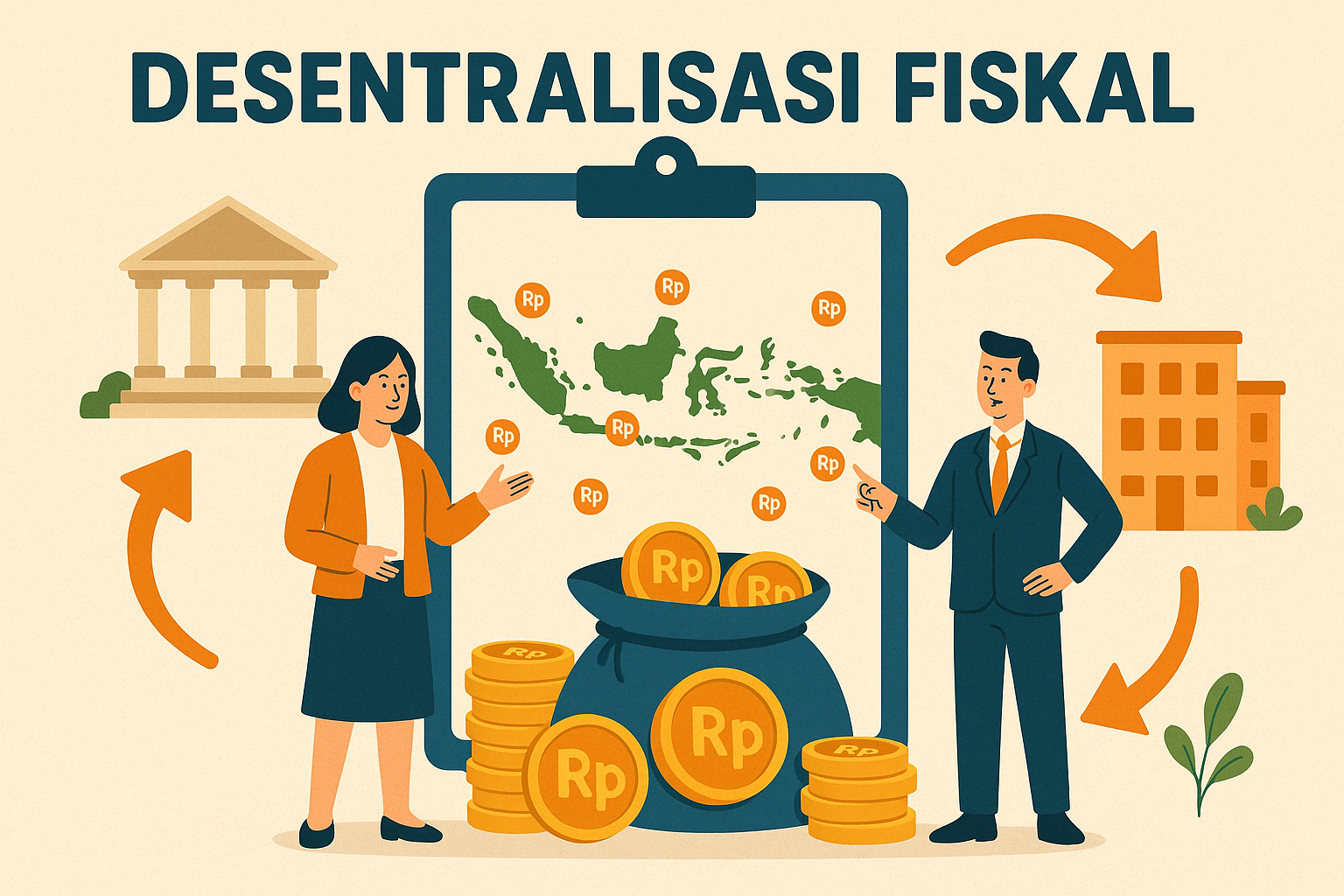Regional Autonomy: Power Dynamics in Indonesia’s Provinces – What You Never Hear About Local Governance!
JAKARTA, turkeconom.com – Regional Autonomy is a crucial aspect of Indonesia’s governance structure, allowing provinces to exercise authority over their own affairs. Since the implementation of regional autonomy in 1999, the dynamics of power between the central government and local authorities have shifted significantly. This article delves into the complexities of regional autonomy in Indonesia, exploring the implications for local governance, the challenges faced by provinces, and what remains largely unaddressed in public discourse.
Understanding Regional Autonomy

The Concept of Regional Autonomy
Regional autonomy refers to the delegation of power from the central government to local governments, enabling them to make decisions regarding their own administrative, economic, and social affairs. This framework aims to enhance local governance, promote democratic participation, and improve public services.
Historical Background
The roots of regional autonomy in Indonesia can be traced back to the post-Suharto era when the demand for greater political freedom and local governance became prominent. The Law on Regional Government (Law No. 22/1999) marked a significant turning point, granting provinces and districts more control over their administrative functions.
Objectives of Regional Autonomy
The primary objectives of regional autonomy include:
- Enhancing Local Governance: Empowering local authorities to address specific regional needs and priorities.
- Promoting Accountability: Encouraging local governments to be more responsive to their constituents.
- Fostering Economic Development: Allowing regions to tailor their economic strategies to local conditions.
The Power Dynamics in Indonesia’s Provinces
Central vs. Local Authority
The relationship between the central government and local authorities in Indonesia is characterized by a constant tug-of-war over power and resources. While regional autonomy grants provinces significant authority, the central government retains substantial control over critical areas such as finance, security, and national policies.
Fiscal Centralization
Despite the push for regional autonomy, fiscal centralization remains a significant challenge. The central government controls the distribution of fiscal resources, often leading to disparities in funding among provinces. This central control can hinder local governments’ ability to implement autonomous policies effectively.
Local Political Structures
The political landscape in Indonesia’s provinces is shaped by local governance structures, which vary significantly across regions. These structures influence how power is exercised and how effectively local governments can respond to their constituents’ needs.
Local Elections
Elections at the provincial and district levels play a vital role in shaping local governance. However, issues such as corruption, political patronage, and electoral violence can undermine the integrity of these elections, affecting the quality of leadership and governance.
Challenges of Regional Autonomy
Implementation Issues
While regional autonomy aims to empower local governments, the implementation of policies often faces significant challenges. These include:
- Capacity Constraints: Many local governments lack the necessary human resources and technical expertise to manage their responsibilities effectively.
- Corruption and Mismanagement: Corruption remains a pervasive issue in many regions, undermining the potential benefits of regional autonomy.
Inter-Regional Disparities
The uneven distribution of resources and development across Indonesia’s provinces is a critical concern. Some regions, particularly those rich in natural resources, have benefited significantly from regional autonomy, while others continue to struggle with poverty and underdevelopment.
Case Study: Resource-Rich Provinces
In provinces like East Kalimantan and Papua, regional autonomy has led to increased revenue from natural resources. However, the challenge remains in ensuring that this wealth translates into tangible benefits for local communities.
Social and Cultural Factors
Indonesia’s diverse social and cultural landscape adds another layer of complexity to regional autonomy. Local governance must navigate various ethnic, religious, and cultural dynamics, which can influence policy decisions and community engagement.
The Role of Civil Society
Advocacy and Participation
Civil society organizations play a crucial role in promoting regional autonomy and advocating for better governance. They help hold local governments accountable and ensure that citizens’ voices are heard in the decision-making process.
Grassroots Movements
Grassroots movements have emerged in various provinces, pushing for greater transparency and accountability in local governance. These movements often focus on issues such as environmental protection, land rights, and social justice.
Challenges Faced by Civil Society
Despite their importance, civil society organizations in Indonesia face numerous challenges, including:
- Repression: In some regions, activists and organizations encounter resistance from local authorities, limiting their ability to operate freely.
- Funding Constraints: Many civil society organizations struggle with financial sustainability, impacting their capacity to advocate effectively.
The Future of Regional Autonomy in Indonesia
Reforms and Policy Directions
To address the challenges of regional autonomy, several reforms and policy directions can be considered:
- Decentralization of Fiscal Powers: Empowering local governments with greater fiscal autonomy can enhance their ability to manage resources effectively.
- Capacity Building: Investing in training and capacity-building initiatives for local officials can improve governance and service delivery.
Strengthening Local Governance
Strengthening local governance through enhanced participation, transparency, and accountability mechanisms is essential for realizing the potential of regional autonomy. This includes:
- Encouraging Public Participation: Fostering community engagement in local decision-making processes can lead to more responsive and effective governance.
- Implementing Transparent Practices: Promoting transparency in budgeting and resource allocation can help combat corruption and build trust in local governments.
Conclusion
Regional autonomy in Indonesia represents a significant shift in governance, with the potential to empower provinces and enhance local development. However, the complex power dynamics between the central government and local authorities, coupled with implementation challenges, pose significant obstacles to achieving the intended benefits of regional autonomy.
As Indonesia continues to navigate its journey toward effective local governance, addressing these challenges will be crucial. By fostering a more equitable distribution of resources, strengthening local capacities, and promoting civil society engagement, Indonesia can unlock the full potential of regional autonomy, ultimately leading to more inclusive and sustainable development across its provinces.
Sharpen Your Skills: Delve into Our Expertise on Politic
Check Out Our Latest Piece on Election Integrity!











